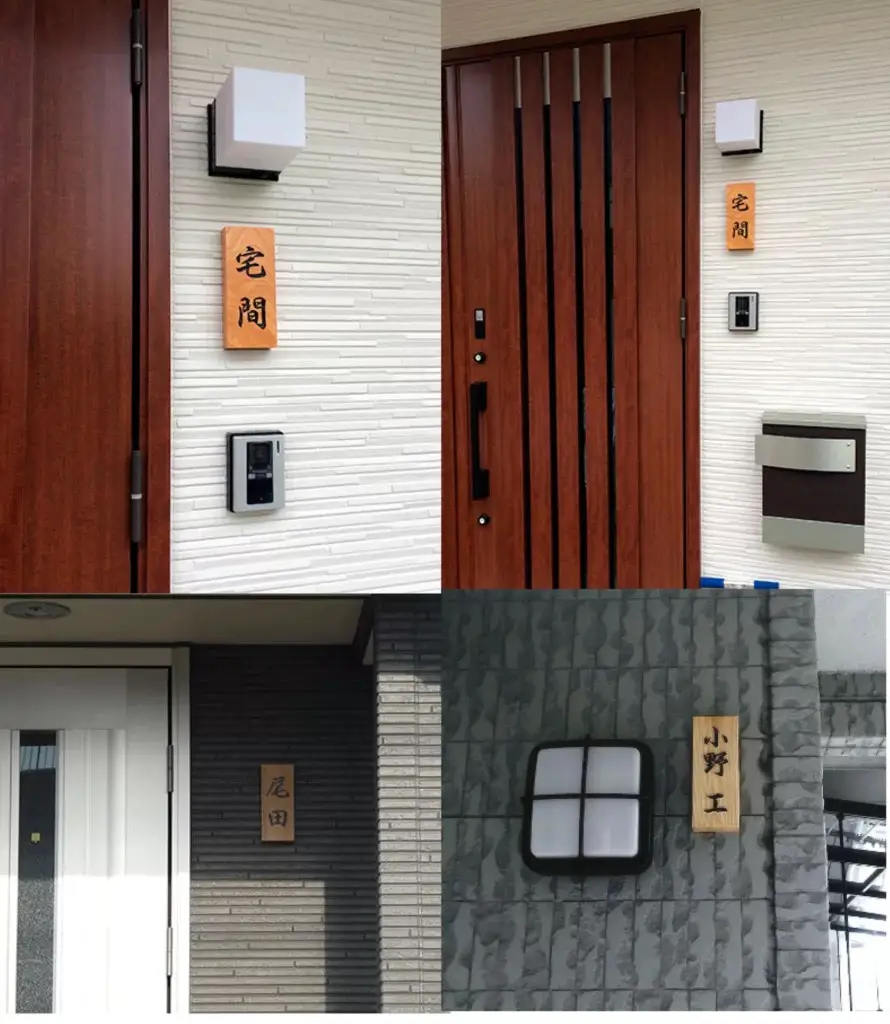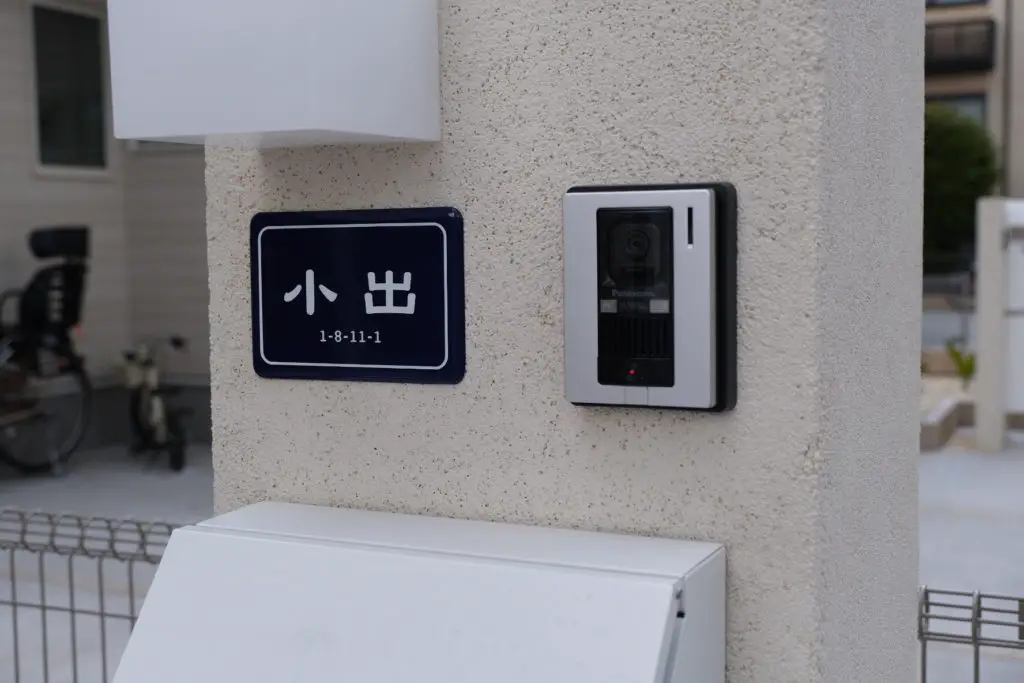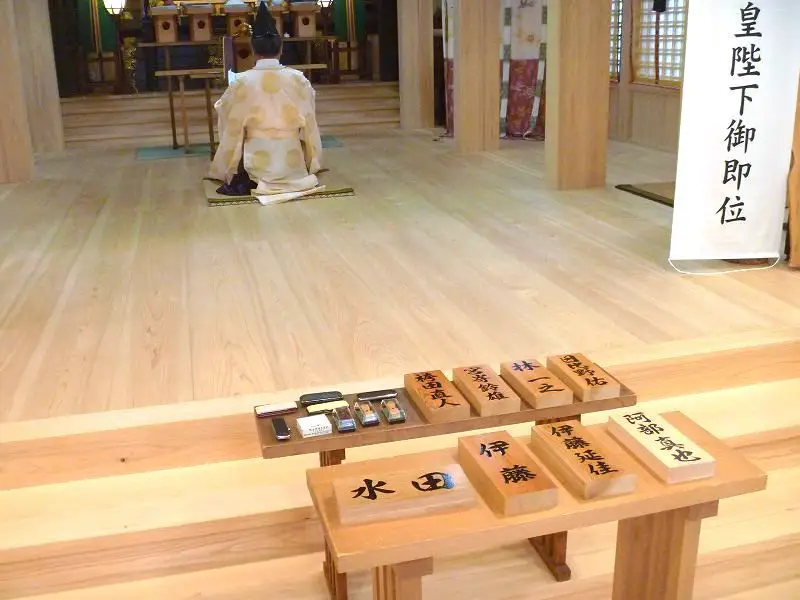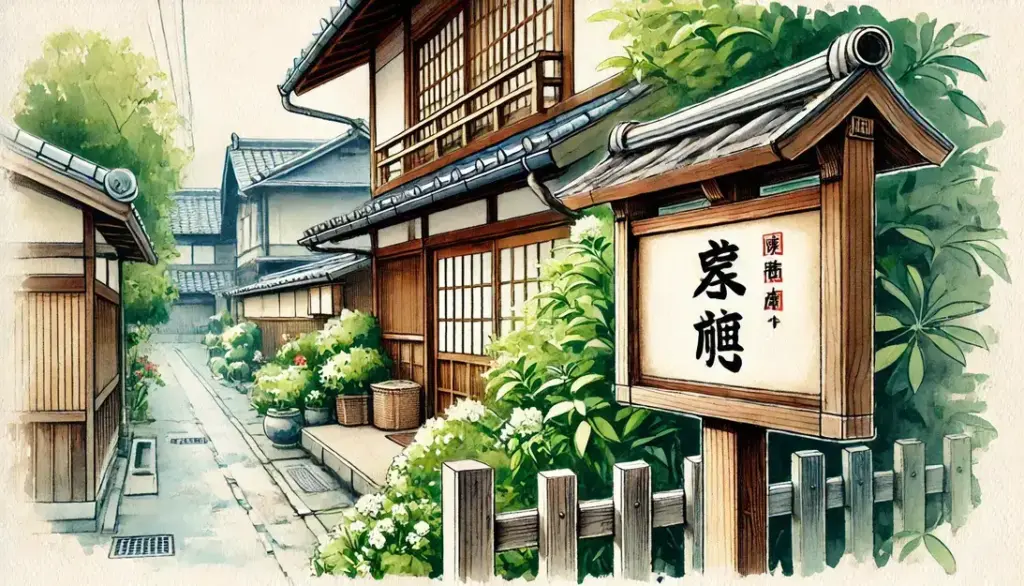Hyousatsu, often called nameplates or doorplates in Japan, are more than just practical markers. They traditionally display the family name outside a home, offering a sense of identity and pride. These plates have been a part of Japanese culture for generations, helping with deliveries and serving as a welcoming gesture. However, as modern living and privacy concerns grow, their use is gradually declining. Understanding hyousatsu reveals a unique piece of Japan’s cultural heritage that blends tradition with daily life.
Understanding Hyousatsu
Hyousatsu, a concept deeply rooted in Japanese culture, blends practicality with tradition. These nameplates, often seen outside homes, serve both functional and symbolic purposes. Let’s explore their meaning, history, and cultural impact.

Definition and Meaning
Hyousatsu (表札) translates to “nameplate” or “doorplate” in English. In Japanese, “表” (hyou) means “surface” or “exterior,” while “札” (satsu) refers to a “plate” or “tag.” Together, the term literally describes a plate on the exterior of a home that bears the family name. These simple yet significant markers encapsulate the essence of identity and belonging in Japan, as they act as both identifiers for visitors and symbols of familial pride.
For more on the meaning and use of Hyousatsu, see this detailed explanation.
Historical Background
The use of Hyousatsu in Japan dates back centuries. Traditionally, they were used to identify families in neighborhoods where home addresses were less common or precise. This was particularly important in densely populated areas where navigation relied on recognizable landmarks rather than detailed postal codes.
During the Edo period (1603-1868), Hyousatsu developed further significance as literacy increased. Homeowners displayed their family names, often written stylishly with calligraphy, as a statement of cultural refinement. The materials also varied, with wealthier families opting for polished wood or metal while others used simpler wooden plaques. Over time, these nameplates became synonymous with the Japanese concept of “uchi” (inside) versus “soto” (outside), underscoring the separation of private and public spheres.

Cultural Significance
Hyousatsu holds a distinct place in Japanese culture. Beyond practicality, it symbolizes a family’s presence and roots within a community. Displaying a family’s name at the entrance of a home signifies openness and hospitality. It’s a simple yet profound way of saying, “This is who we are.”
In modern times, Hyousatsu continues to resonate despite shifts toward anonymity in urban areas. For many Japanese, these plates still reflect family pride, serving as a small but powerful marker of their legacy. They remind homeowners of their ancestral ties and societal role.
Interestingly, Hyousatsu is also seen as a gesture of respect in Japanese homes. By announcing the family name, it creates a connection with visitors before they even step inside—a reflection of Japan’s deep cultural emphasis on harmony and relationship-building.
How Hyousatsu Is Used Today
Hyousatsu, though traditional in origin, continues to play an important role in Japan. From helping navigate neighborhoods to becoming a statement piece in home decor, these nameplates have adapted to modern needs. Let’s break down their uses today.

Traditional Homes vs Apartments
The use of hyousatsu varies significantly between traditional Japanese homes and apartments. In traditional homes, hyousatsu often display a sense of heritage and culture. These plates are more prominent, usually crafted from materials like wood or metal, showcasing intricate designs or artistic calligraphy. Traditional homes embrace hyousatsu as a symbol of family pride, often complementing the architecture of the house.
In contrast, apartments typically feature simpler, standardized nameplates made of plastic or aluminum. With limited space and a focus on practicality, personalization is often minimal. However, some apartment dwellers opt for decorative stickers or magnetic plates as a subtle way to inject personality. These adaptations allow residents to maintain the spirit of hyousatsu even in smaller, shared spaces.
For more on the differences between traditional homes and apartments in Japan, this guide to housing layouts is an excellent resource.
Practical Applications
Hyousatsu serves practical purposes beyond aesthetics. They act as navigational aids, helping visitors and delivery workers identify homes, especially in Japan’s labyrinthine neighborhoods. Without a hyousatsu, finding a specific house number can feel like solving a puzzle.
Delivery services in Japan heavily rely on hyousatsu. Couriers use these plates to confirm addresses, ensuring efficient and accurate deliveries. This practice is especially crucial in areas with dense housing, where homes are often tightly packed, and unmarked addresses might create confusion.
Beyond deliveries, hyousatsu strengthens community ties. Neighbors can identify families by name, fostering a sense of familiarity. This feature, though simple, reflects Japan’s cultural emphasis on connection and cooperation.
If you’re curious about how hyousatsu supports daily life, check out this article discussing their navigational role.
Modern Design Trends
Over time, hyousatsu has embraced modern design trends while maintaining its essence. Today, customized hyousatsu is becoming increasingly popular. People experiment with sleek materials such as tempered glass, ceramic, and brushed metal. These contemporary styles align with modern home designs, where minimalism and clean aesthetics prevail.
Additionally, digital advancements have found their way into hyousatsu. Some homeowners install electronic nameplates with LED displays or smartphone integration. These allow for easy updates, like displaying temporary visitor names or messages—a practical yet stylish innovation.
Sustainability has also made its mark. Many opt for eco-friendly nameplates crafted from recycled wood or other sustainable materials, blending tradition with conscious living. This shift echoes the broader global trend toward green lifestyles.
For examples of unique customizations, this post on modern Japandi design trends offers creative insights on merging tradition with modern aesthetics.
By adapting to modern lifestyles, hyousatsu proves its enduring relevance. From maintaining cultural values to aligning with aesthetic trends, these nameplates evolve while holding on to their roots.
Challenges Facing Hyousatsu
Even with its rich tradition and cultural importance, hyousatsu faces challenges in modern times. From privacy concerns to declining usage, these issues paint a picture of changing cultural dynamics.
Privacy Concerns
In today’s hyper-connected world, publicizing personal details has become a double-edged sword. Hyousatsu, which openly displays family names on doorways, raises valid privacy and security concerns.
Why does this matter? Imagine your name hanging on your front door like an open invitation. While this fosters community connections in tight-knit neighborhoods, it can also expose families to risks. With just a name, someone could potentially find sensitive data online. People with uncommon family names face even greater risks of being targeted. Concerns about identity theft or even harassment have sparked debates around whether hyousatsu still aligns with modern privacy standards.
Interestingly, such concerns aren’t limited to homes. Similar privacy issues have emerged in workplaces and schools in Japan. This article reveals that even name tags in stores and schools have faced criticism, with some replaced by more anonymous alternatives. The same logic applies here—putting names on display can make families feel vulnerable, particularly in larger cities where anonymity is valued.
Decline in Usage
The charm of hyousatsu is undeniable, but its presence is fading, especially in urban areas. Why? Changing lifestyles and modern technologies are nudging the tradition aside.
- Urban Living: In large cities, apartment complexes often use intercom systems instead of personal nameplates. Here, family identity takes a backseat to privacy and security. Additionally, standardized housing designs leave little room for ornamental or personalized hyousatsu. This has contributed to the gradual shift from using them.
- Technology’s Influence: GPS navigation and online delivery systems have made traditional methods of identification less crucial. Features like digital maps pinpoint house locations accurately, even without a nameplate. The rise of virtual interactions also means fewer face-to-face connections, negating the role of hyousatsu in fostering neighborhood ties.
- Generational Preferences: Modern homeowners prioritize minimalist aesthetics over traditional designs. Younger generations may view hyousatsu as old-fashioned or unnecessary. Customization is still an option, but its sentimental value is not as relevant for many.
For more context on these societal shifts, this article explores how hyousatsu is losing prominence in contemporary Japan.
These challenges don’t undermine the cultural essence of hyousatsu but rather show how traditions must evolve with the times. By addressing privacy risks and adapting to modern needs, hyousatsu could still hold its place in Japanese homes for years to come.

The Art of Customizing Hyousatsu
Hyousatsu, a seemingly simple nameplate, becomes a personal masterpiece when customized. The design reflects not only a family’s identity but also its style, values, and cultural heritage. From selecting the right material to incorporating symbolic motifs, every detail adds a layer of meaning.
Material Choices: Highlight Popular Materials Used to Create Hyousatsu, From Wood to Metal
The material used in a hyousatsu sets the tone for its design. It ranges from timeless wood to durable metal, each with distinct benefits:
- Wood: A traditional favorite, especially cedar or hinoki, known for their resistance to weather and insects. Wooden hyousatsu exude warmth and connect to nature, embodying the Japanese aesthetic of “wabi-sabi,” or finding beauty in imperfection. For example, handcrafted cedar plates are both practical and elegant, as seen in this example of Japanese cedar nameplates.
- Metal: Sleek metals like stainless steel or brass offer a more modern, minimalist approach. These materials resist corrosion, making them ideal for urban homes. Their polished surfaces can catch light beautifully, standing out as both functional and decorative.
- Glass and Ceramic: For those wanting a contemporary or artistic twist, tempered glass and ceramics are becoming popular. These materials often allow for modern designs and bold colors.
When choosing materials, families often consider the climate and the architectural style of their homes. A rustic wooden hyousatsu complements a traditional house, while metal might be better suited for a modern city home.
Styling and Calligraphy: Explain How Japanese Calligraphy and Styles Are Incorporated Into Hyousatsu Designs
Typography transforms hyousatsu into a form of art. Japanese calligraphy, or shodō, plays a major role in its aesthetic. The style of writing can communicate mood and character, making each plate unique.
There are three dominant calligraphy styles often used on hyousatsu:
- Kaisho (Block Script): Known for its clarity, this style is formal and easy to read. It’s the most common for hyousatsu, perfect for those who prefer simplicity.
- Gyosho (Semi-Cursive): This strikes a balance between readability and artistic flair, adding a touch of personal expression.
- Sosho (Cursive): Highly artistic and fluid, Sosho is for families who want something truly unique, though it can be harder to read.
Designers often collaborate closely with homeowners to ensure the calligraphy reflects their personalities. For an overview of different Japanese calligraphy styles, this guide on Shodo artistry provides excellent insights.
Incorporating Symbolism: Discuss How Families Add Symbols or Motifs to Reflect Their Beliefs or Values
Symbolism elevates hyousatsu from a practical item to a meaningful artifact. Families often choose to include traditional Japanese motifs to reflect their heritage, beliefs, or aspirations. These designs, based on nature or folklore, carry deep cultural meaning.
- Family Emblems (Kamon): Some families incorporate their kamon, or crest, into the hyousatsu. This symbolizes lineage and pride.
- Floral Motifs: Flowers like sakura (cherry blossoms) or chrysanthemums signify renewal, beauty, and longevity.
- Animal Imagery: Designs featuring cranes or turtles evoke prosperity, luck, and longevity.
- Geometric Patterns: Patterns like hemp leaves symbolize growth and resilience.
These motifs can be engraved, painted, or embossed onto the surface. They turn hyousatsu into a visual storybook, celebrating both individuality and tradition. Learn more about the meanings behind these designs at this guide to Japanese motifs and symbols.
By customizing hyousatsu, Japanese families blend functionality with creativity, turning a simple nameplate into a symbol of cultural expression. Whether through material, calligraphy, or symbolism, each detail tells a story that starts at the front door.
How to Get Your Own Hyousatsu
Owning a hyousatsu connects you to a cherished Japanese tradition. Whether you’re looking to buy, customize, or make your own, there are several ways to acquire this iconic nameplate. Here’s how!
Where to Buy
Hyousatsu is widely available both online and in physical stores across Japan. If you’re looking for convenience or unique designs, here are some top options:
- Online Markets: Platforms like Etsy feature handmade hyousatsu crafted from different materials. These often carry traditional and modern options, perfect for matching various tastes.
- Specialized Workshops: Stores like Sugicho make custom wood-carved and floating character plates. These cater to those seeking personalized, high-quality pieces.
- Department Stores in Japan: Popular spots like Hands in Shibuya and Shinjuku accept hyousatsu orders. According to this Reddit thread, some can complete orders within just a few hours.
- Local Artisans: If you’re visiting Japan, smaller craft shops often showcase artisans who blend traditional calligraphy with custom designs. These nameplates are not only practical but serve as souvenirs steeped in cultural authenticity.
When shopping, make sure to inquire about delivery options and customization possibilities for a truly unique design.
Choosing the Right Design
Picking the perfect hyousatsu adds a personal touch to your home. Beyond utility, the design can reflect your family identity or personal style. Here are some pointers:
- Consider Materials: For durability, choose wood like cedar, which resists weather, or modern metals like stainless steel for a sleek, contemporary look. This Etsy listing showcases cedar nameplates as a mix of tradition and practicality.
- Match Your Home: Align the hyousatsu aesthetic with your home’s design. Traditional homes pair well with wooden or ceramic plates. Modern homes often suit glass or brushed metal options.
- Calligraphy Matters: Japanese calligraphy styles—Kaisho, Gyosho, and Sosho—give your plate a distinct personality. A semi-cursive design adds flair without sacrificing readability.
- Embrace Symbolism: Add symbols like your family crest (kamon) or floral motifs to capture personal values or ancestry. Designs like these can transform a simple nameplate into a subtle work of art.
Thinking about these elements ensures your hyousatsu stands out while preserving cultural and functional significance.

DIY Hyousatsu
If you want a personalized touch or enjoy crafts, making your own hyousatsu is a rewarding project. It’s simpler than it seems, and you don’t need advanced tools. Here’s a brief guide:
What You’ll Need:
- Wood (Cedar or any weather-resistant type)
- Paint or wood stain
- Calligraphy brush or stencil
- Sealant for weather protection
Steps:
- Cut the Base: Start with a wooden base in your preferred size. Sand it smooth to prepare for painting.
- Design the Name: Choose a calligraphy style. You can use stencils or freehand the lettering for authenticity. If unsure about kanji, Sugicho Workshop shares templates to guide beginners.
- Add Details: Include symbols or patterns like cherry blossoms or geometric designs. This step personalizes your hyousatsu.
- Seal It: Use a weatherproof sealant to protect against elements.
Crafted nameplates often carry a special charm. If you’re into DIY, it’s a fantastic way to create a truly one-of-a-kind piece.
Hyousatsu can represent much more than just a name; it’s an extension of who you are. Whether you buy one or design your personal piece, it’s a timeless way to honor tradition and add character to your home.
What Is Hyousatsu? Conclusion
Hyousatsu, a timeless symbol of Japanese tradition, connects homes to identity and community. These nameplates represent a family’s presence while offering functional value, such as aiding deliveries or welcoming visitors.
Despite facing challenges like urban anonymity and privacy concerns, hyousatsu continues to adapt. Modern designs and uses demonstrate its relevance in today’s world while preserving its cultural roots.
Exploring hyousatsu not only enriches our understanding of Japanese culture but inspires us to appreciate how tradition and practicality intertwine. Consider adding a touch of this heritage to your own space—it’s a small yet meaningful way to celebrate lasting traditions.


